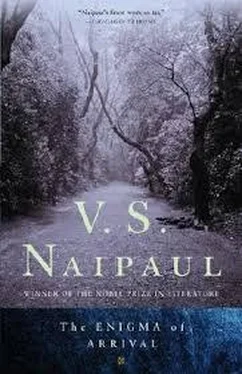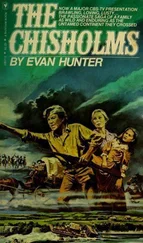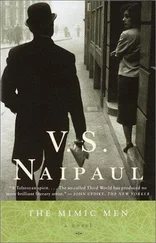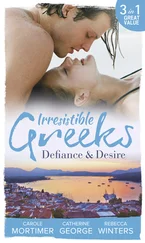V. Naipaul - The Enigma of Arrival
Здесь есть возможность читать онлайн «V. Naipaul - The Enigma of Arrival» весь текст электронной книги совершенно бесплатно (целиком полную версию без сокращений). В некоторых случаях можно слушать аудио, скачать через торрент в формате fb2 и присутствует краткое содержание. Год выпуска: 2012, Издательство: Picador, Жанр: Современная проза, на английском языке. Описание произведения, (предисловие) а так же отзывы посетителей доступны на портале библиотеки ЛибКат.
- Название:The Enigma of Arrival
- Автор:
- Издательство:Picador
- Жанр:
- Год:2012
- ISBN:нет данных
- Рейтинг книги:3 / 5. Голосов: 1
-
Избранное:Добавить в избранное
- Отзывы:
-
Ваша оценка:
- 60
- 1
- 2
- 3
- 4
- 5
The Enigma of Arrival: краткое содержание, описание и аннотация
Предлагаем к чтению аннотацию, описание, краткое содержание или предисловие (зависит от того, что написал сам автор книги «The Enigma of Arrival»). Если вы не нашли необходимую информацию о книге — напишите в комментариях, мы постараемся отыскать её.
The Enigma of Arrival — читать онлайн бесплатно полную книгу (весь текст) целиком
Ниже представлен текст книги, разбитый по страницам. Система сохранения места последней прочитанной страницы, позволяет с удобством читать онлайн бесплатно книгу «The Enigma of Arrival», без необходимости каждый раз заново искать на чём Вы остановились. Поставьте закладку, и сможете в любой момент перейти на страницу, на которой закончили чтение.
Интервал:
Закладка:
Thirty years later the Aranguez vegetable plots were to cover many square miles, land built up from swamp, season by season, creating a flat, wide, Dutch effect, extending all the way to swamp mangrove in one direction, and in the other appearing to go to the foot of the Trinidad Northern Range, now no longer green and empty, but covered on its lower slopes with the shacks of illegal black immigrants from the other islands. The landscape which, when I was a child, still retained some of its aboriginal, prediscovery features, was to be irrevocably altered, and the people with it.
Thirty years later, at the time of the oil boom, many of those vegetable growers (or their descendants) were to become people of wealth, with children at schools or universities in Canada and the United States. But at the beginning, just after the war, when there were still damp, palm-thatched huts in the aboriginal reeds and sedge of the swamp beside the American-built highway, the labor of those vegetable plots, scientific though it was, still looked brutish and underpaid, an extension of plantation life, of mud and sun and bare feet, damp huts, and oily or sweated felt hats folded at the back to fit the head like a visored cap.
Flowers were beautiful; everyone loved them. In Port of Spain there were the many acres of the Royal Botanical Gardens, established after the British conquest of the island; and the lily ponds and rockeries of the Rock Gardens. Both places were recognized beauty spots. But the idea of “gardeners” was not contained in the idea of the garden; in fact, it ran contrary to the idea of the garden. The garden spoke of Port of Spain and comfort and a good office job and Sunday drives around the Queen’s Park Savannah. The gardener belonged to the plantation or estate past. That past lay outside Port of Spain, in the Indian countryside, in the fields, the roads, the huts.
Literature or the cinema (though I cannot think of any particular film) would have given the word different associations. But that knowledge — of swamp and estate and vegetable plot — was the knowledge I took to England. That was the knowledge that lay below my idea of the P. G. Wodehouse gardener and my idea of the gardener in Richard II , poetically conversing with a weeping queen. And inevitably I acquired new knowledge. There were the gardeners of the great parks of London. There was the gardener of my Oxford college, a mild, humorous, pipe-smoking man with (as I thought) the manner of one of the dons. And just as in the allotments beside the railway I had grown to see the original of the Aranguez plots; so, coming to the manor (with its echoes of the estate big house and servants), and seeing around me the remnants of agricultural life (the remote, distorted original of the Trinidad estates), that earlier knowledge revived in me.
But Pitton, the last of the legendary sixteen, was quite original. He appeared at nine every morning at the wide, white-painted gate at the end of the lawn. And in his three-piece tweed suit he looked so unlike a gardener or any sort of manual worker; he so studiously avoided looking at my cottage, so carefully kept his distance, kept to the far path; that I thought he was going on through the back of the manor grounds to some quite different duties, and in opening the white gate was simply exercising some old public right of way.
There was a certain amount of movement in and out of the manor grounds. And until his punctuality and regularity gave him away, I thought that Pitton might be one of those visitors, someone perhaps approaching the farmyard or the churchyard from a back way; and someone also with a right to use the water tap near the garden shed at the side of the squash court built like a farmhouse.
We also had animal visitors. There was a black and white cat that came down the way Pitton came and, in the tall grass and weeds near the box hedge, became a great hunter. There was a Labrador dog that made an opposite circuit. He belonged to a house further up the valley; his master was away in London during the week, and on weekday mornings this dog did its own circuit of the water meadows. On sunny mornings from my sitting room I saw his tail bouncing up and down far away, saw no more; until eventually, having pushed through water meadow and overgrown orchard, the animal fetched up in front of my cottage, underbelly black and wet, paws black and wet. Like Pitton, he stuck close to the buildings on the other side of the lawn; and there was in his hunched shoulders, his looking straight ahead (a little like Pitton trying to give the assurance that he was minding his own business), some hint that he knew he was in territory not his own. The elegant fawn-colored creature was not liked by everybody. His morning circuit was not of the water meadows alone. He was also a haunter of dustbins. The Phillipses at the manor complained; even Pitton complained. A disappointment there, about the dog. A little like the disappointment I felt in Pitton himself when he, the carefully dressed, paunchy, staid figure, became known to me and turned out to be only the gardener.
The wilderness that the black and white cat and the fawn-colored Labrador explored was the wilderness that claimed Pitton (or so it seemed), the wilderness which he entered every day as gardener. But he never came out as dirty or as wet as the Labrador; he came out as clean as the cat.
The main reason was his steadiness, his refusal to hurry himself. Pitton knew how to pace himself. There was nothing in Pitton’s labor of the attack or boisterousness of Jack when I saw him in his allotment or garden. On some summer afternoons Jack worked bare-backed. Pitton would never have done that. Pitton cared too much for the idea of clothes. If Jack’s varied labors and varied dress (as I saw them in his after-hours garden) were like successive illuminations in a book of hours, exaggerated and emblematic, Pitton was a more modern man, a man of fashion.
Yet in Pitton’s fashionableness, his careful but regular buying of clothes that matched the seasons and were meant for that season’s wear, in this very steadiness, this absence of waste, there was something like ritual. Clothes and the seasons ritualized Pitton’s year. There was a time for the felt hat and the three-piece suit, thornproof. There was a time for the straw hat; there was a time when the three-piece suit became a two-piece. There was a time for pullovers, one pullover, two pullovers. There was a time for “country” shirts, a time for lighter shirts; a time for a quilted jacket; a time for a dark, thin, plastic raincoat. His dress was absolutely suited to the work he was doing and the time of year. In that fine judgment about clothes and the weather, as well as in his steadiness, his physical pacing of himself, lay Pitton’s extraordinary neatness.
And in his clothes, his appearance, his refusal to look like a gardener or farm worker, a laborer, lay much of his pride. I thought that at least some of the vanity would have been given Pitton by his wife. She was a woman of a great, delicate beauty, which was extraordinary in someone of her station; her complexion and features and her carriage suggested the nearness of some fine strain.
Both Pitton and his wife were people without the gift of words. They had trouble finding words for what they had to say, so it seemed that they had very little to say. But the beauty of Pitton’s wife was of such a sort that it overcame her intellectual, which was also her social, disability. It was always good to see her; her near-dumbness was always a surprise. Beauty is beauty, though; and beauty is rare; no one who possesses it can be indifferent to it. And I thought that Pitton’s clothes were meant — either by Pitton himself or by his wife — to match, to set off, Mrs. Pitton’s looks.
Then another idea was given me by a middle-aged English writer, a friend for many years, who was visiting one day. As a writer he was socially scrupulous, knowing how in England to look through both the caricature and the self-caricature.
Читать дальшеИнтервал:
Закладка:
Похожие книги на «The Enigma of Arrival»
Представляем Вашему вниманию похожие книги на «The Enigma of Arrival» списком для выбора. Мы отобрали схожую по названию и смыслу литературу в надежде предоставить читателям больше вариантов отыскать новые, интересные, ещё непрочитанные произведения.
Обсуждение, отзывы о книге «The Enigma of Arrival» и просто собственные мнения читателей. Оставьте ваши комментарии, напишите, что Вы думаете о произведении, его смысле или главных героях. Укажите что конкретно понравилось, а что нет, и почему Вы так считаете.












